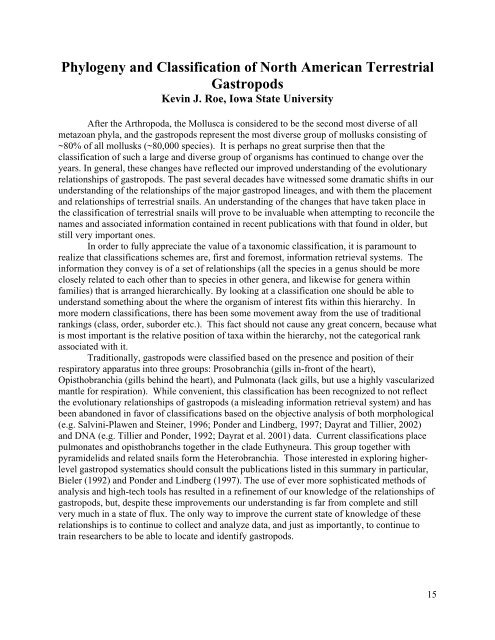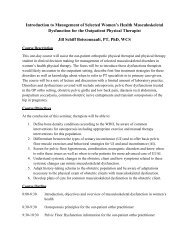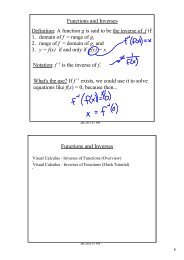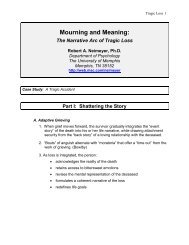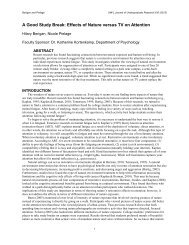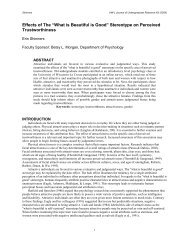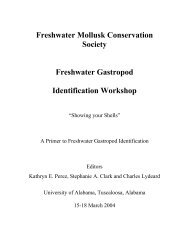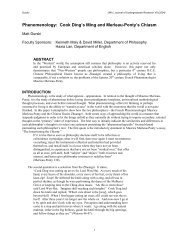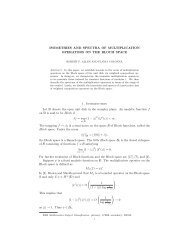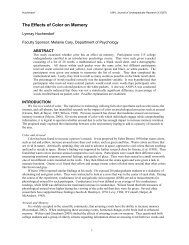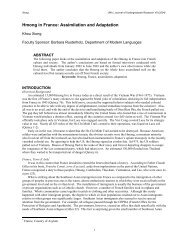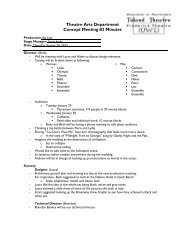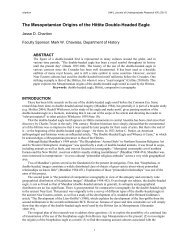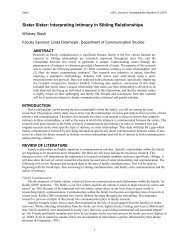A Guide for Terrestrial Gastropod Identification - University of ...
A Guide for Terrestrial Gastropod Identification - University of ...
A Guide for Terrestrial Gastropod Identification - University of ...
Create successful ePaper yourself
Turn your PDF publications into a flip-book with our unique Google optimized e-Paper software.
Phylogeny and Classification <strong>of</strong> North American <strong>Terrestrial</strong><br />
<strong>Gastropod</strong>s<br />
Kevin J. Roe, Iowa State <strong>University</strong><br />
After the Arthropoda, the Mollusca is considered to be the second most diverse <strong>of</strong> all<br />
metazoan phyla, and the gastropods represent the most diverse group <strong>of</strong> mollusks consisting <strong>of</strong><br />
~80% <strong>of</strong> all mollusks (~80,000 species). It is perhaps no great surprise then that the<br />
classification <strong>of</strong> such a large and diverse group <strong>of</strong> organisms has continued to change over the<br />
years. In general, these changes have reflected our improved understanding <strong>of</strong> the evolutionary<br />
relationships <strong>of</strong> gastropods. The past several decades have witnessed some dramatic shifts in our<br />
understanding <strong>of</strong> the relationships <strong>of</strong> the major gastropod lineages, and with them the placement<br />
and relationships <strong>of</strong> terrestrial snails. An understanding <strong>of</strong> the changes that have taken place in<br />
the classification <strong>of</strong> terrestrial snails will prove to be invaluable when attempting to reconcile the<br />
names and associated in<strong>for</strong>mation contained in recent publications with that found in older, but<br />
still very important ones.<br />
In order to fully appreciate the value <strong>of</strong> a taxonomic classification, it is paramount to<br />
realize that classifications schemes are, first and <strong>for</strong>emost, in<strong>for</strong>mation retrieval systems. The<br />
in<strong>for</strong>mation they convey is <strong>of</strong> a set <strong>of</strong> relationships (all the species in a genus should be more<br />
closely related to each other than to species in other genera, and likewise <strong>for</strong> genera within<br />
families) that is arranged hierarchically. By looking at a classification one should be able to<br />
understand something about the where the organism <strong>of</strong> interest fits within this hierarchy. In<br />
more modern classifications, there has been some movement away from the use <strong>of</strong> traditional<br />
rankings (class, order, suborder etc.). This fact should not cause any great concern, because what<br />
is most important is the relative position <strong>of</strong> taxa within the hierarchy, not the categorical rank<br />
associated with it.<br />
Traditionally, gastropods were classified based on the presence and position <strong>of</strong> their<br />
respiratory apparatus into three groups: Prosobranchia (gills in-front <strong>of</strong> the heart),<br />
Opisthobranchia (gills behind the heart), and Pulmonata (lack gills, but use a highly vascularized<br />
mantle <strong>for</strong> respiration). While convenient, this classification has been recognized to not reflect<br />
the evolutionary relationships <strong>of</strong> gastropods (a misleading in<strong>for</strong>mation retrieval system) and has<br />
been abandoned in favor <strong>of</strong> classifications based on the objective analysis <strong>of</strong> both morphological<br />
(e.g. Salvini-Plawen and Steiner, 1996; Ponder and Lindberg, 1997; Dayrat and Tillier, 2002)<br />
and DNA (e.g. Tillier and Ponder, 1992; Dayrat et al. 2001) data. Current classifications place<br />
pulmonates and opisthobranchs together in the clade Euthyneura. This group together with<br />
pyramidelids and related snails <strong>for</strong>m the Heterobranchia. Those interested in exploring higherlevel<br />
gastropod systematics should consult the publications listed in this summary in particular,<br />
Bieler (1992) and Ponder and Lindberg (1997). The use <strong>of</strong> ever more sophisticated methods <strong>of</strong><br />
analysis and high-tech tools has resulted in a refinement <strong>of</strong> our knowledge <strong>of</strong> the relationships <strong>of</strong><br />
gastropods, but, despite these improvements our understanding is far from complete and still<br />
very much in a state <strong>of</strong> flux. The only way to improve the current state <strong>of</strong> knowledge <strong>of</strong> these<br />
relationships is to continue to collect and analyze data, and just as importantly, to continue to<br />
train researchers to be able to locate and identify gastropods.<br />
15


